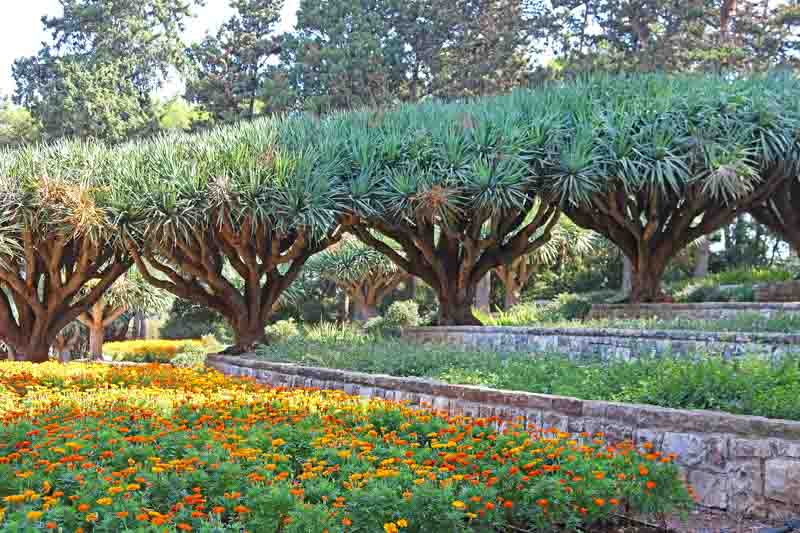Dragon Tree: Symbol of Strength and Survival
The Dragon Tree (Dracaena draco) is a remarkable species that carries a wealth of history, mystery, and ecological significance within its broad, sculptural branches. Here are some interesting facts about this iconic tree:
Ancient Symbolism: The Dragon Tree has been revered in various cultures for centuries. It is often associated with strength, power, and longevity, qualities inspired by its imposing presence and enduring nature.
Blood of the Dragon: Dracaena draco is known for its red sap, which is where its name originates. The sap, called “dragon’s blood,” was used in ancient times for medicinal purposes, as a dye, and in varnish. It was highly prized in the Roman and Greek era and continues to be used in traditional medicine and cosmetics.
Centuries-Old Specimens: Some Dragon Trees are believed to be over a thousand years old, making them among the oldest living tree specimens. Their slow growth rate and resilience contribute to their long lifespan.
Unique Growth Pattern: Unlike most trees, the Dragon Tree does not grow rings, making it difficult to determine a tree’s age accurately. Its growth pattern is characterized by a single trunk that branches out after flowering, creating a distinctive, umbrella-like shape.
Ecological Importance: The Dragon Tree provides habitat and nourishment for various species. Its flowers attract pollinators like bees and birds, while the fruit is a food source for birds, contributing to the ecosystem’s biodiversity.
Drought Resistance: Native to arid climates, the Dragon Tree is incredibly drought-tolerant, capable of surviving long periods without water. This characteristic, along with its ability to grow in poor soil, makes it an excellent choice for xeriscaping and sustainable landscaping.
Symbol of the Canary Islands: The Dragon Tree is a symbol of the Canary Islands, particularly the island of Tenerife, where the ancient and famous “Drago Milenario” resides in Icod de los Vinos, believed to be one of the oldest living specimens.
Cultural Icon: Beyond its ecological value, the Dragon Tree has become a cultural icon, appearing in art, literature, and even on the flags and coats of arms of several places, symbolizing endurance and immortality.

